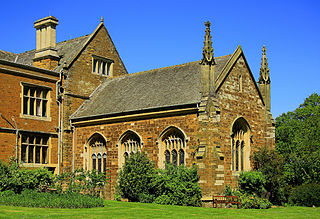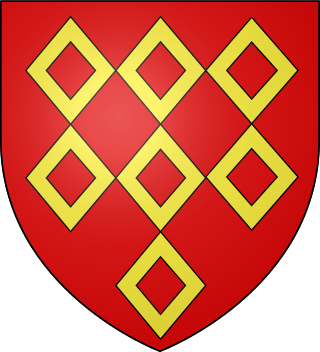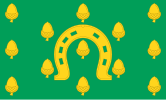
St. Botolph's Priory was a medieval house of Augustinian canons in Colchester, Essex, founded c. 1093. The priory had the distinction of being the first and leading Augustinian convent in England until its dissolution in 1536.

The Priory Church of St Mary and St Hardulph is the Church of England parish church of Breedon on the Hill, Leicestershire, England. The church has also been known as Breedon Priory.

Croxton Abbey, near Croxton Kerrial, Leicestershire, was a Premonstratensian monastery founded by William I, Count of Boulogne.

The Priory Church of St Peter, Thurgarton is a former house of Canons Regular or "Black Canons" and now a Church of England church in Thurgarton, Nottinghamshire, England. St Peter's is a Grade I listed building.

Caldwell Priory was a priory of Canons of the Holy Sepulchre in Bedfordshire, England, from c. 1154 to 1536. It was situated in the south-west of Bedford on the south bank of the River Great Ouse.
Harrold Priory was a priory in Harrold, Bedfordshire, England. It was established in 1138 and disestablished in 1536.
Newnham Priory was a priory in Newnham, Bedford, Bedfordshire, England.

Bicknacre Priory, formerly also Woodham Priory or Woodham Ferrers Priory, was a community of Austin Canons in Bicknacre, Woodham Ferrers, Essex, England.
Bradley Priory was an Augustinian priory in the parish of Nevill Holt, Leicestershire, England.
Charley Priory was a small former priory in Leicestershire, England.

Kirby Bellars Priory was a small priory of Canons Regular of Saint Augustine in Leicestershire, England. It is now the Church of England Parish Church of Saint Peter's serving the village of Kirby Bellars.

Launde Priory is a former Augustinian priory in Leicestershire, England. Its successor Launde Abbey is used as a conference and retreat centre by the Church of England dioceses of Leicester and Peterborough.

Langley Priory is a former Benedictine nunnery in the civil parish of Isley cum Langley, in the North West Leicestershire district, in the county of Leicestershire, England. It is located around a mile and a half south of East Midlands Airport; around a mile from the village of Diseworth.

Owston Abbey was an Augustinian monastery in Owston, Leicestershire, England.
Priory of St. Thomas near Stafford was an Augustinian religious house near Stafford, Staffordshire, England. Founded sometime in approximately 1174, it was a surrendered to the Crown in 1538, during the Dissolution of the Monasteries.

Felley Priory is a 16th century house with gardens located in the village of Felley, Nottinghamshire, UK. It is situated on the grounds of a former priory established by Augustinians in 1156 and dissolved in 1536. The gardens were started in 1974 by Maria Chaworth-Musters and opened to the public through the National Garden Scheme just two years later. Since Maria's passing in 2010, the gardens have been managed by her granddaughter and expert gardener, Michelle Upchurch. In 2021, the gardens were one of the four finalists in the public gardens category in NGS's The Nation's Favourite Gardens competition.
William Keay (1869-1952) was an English civil engineer and architect particularly associated with works in Leicestershire.

William Ferrers, 3rd Baron Ferrers of Groby (1333–1371) was a Leicestershire-based nobleman in fourteenth-century England who took part in some of the major campaigns of the first part of the Hundred Years' War. The eldest of two sons to Henry Ferrers, 2nd Baron Ferrers of Groby (d. 1343), and Isabel de Verdun, daughter of Theobald de Verdun, 2nd Baron Verdun, William was ten years old when he succeeded his father to the Barony.

William Ferrers, 5th Baron Ferrers of Groby (1372–1445) was an English baron in the Late Middle Ages. He was an important figure in Leicestershire society and took part in most of the royal commissions that were held there. He was also active at a national level and earlier in his career he took part in some of the crises in the reigns of both King Richard II and Henry IV. However, he supported the Lancastrian regime under Henry V and acted as a councillor to that King's baby son when the latter inherited the throne at the age of six months. Ferrers was married three times, twice to daughters of the peerage. Because his eldest son died before him, the Ferrers barony descended to his granddaughter's husband. Thus, when William Ferrers died, the Ferrers line, which had begun in England with the Norman conquest, after which they were first granted lands in Leicestershire came to an end.















